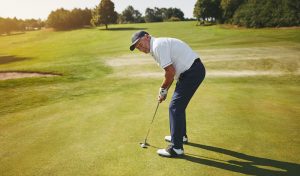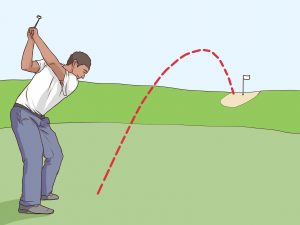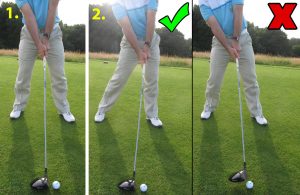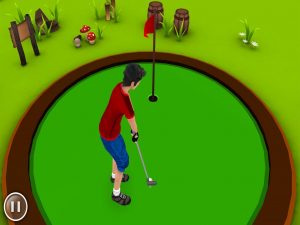Golf Tips For Seniors
Golf is a very popular sport for seniors for many reasons. One of the main reasons is that it is one of the few sports they can still play at their age. So to help out the senior golfers, I have put together a few golf tips for seniors to help them get the most out of the game of golf.
Golf Tips For Seniors
Tip #1: Improve Strength And Flexibility
Senior golfers don’t have the bodies and health that they used to in their youth. Preventing injuries is very important if they want to play more than one or two rounds of golf per year. This is why exercises and stretching that are specifically designed for injury prevention are critical for senior golfers. Here are a few important examples
#1: Torso Rotations –
Sit upright in a stationary chair with your back against the back of the chair. Hold the back of the chair and rotate your body to one side as far as you can and hold yourself in that position for at least 20 seconds (do not over-strain).
Repeat the same process on the other side. Do 10 reps on each side. You should feel a good stretch in your back and other torso muscles which are the same muscles used when swinging a golf club.
This is a great stretch to perform daily to increase your flexibility, but it is also a great stretch to use just before going out golfing to get you loosened up.
#2: Side-Lying Leg Circles –
Hips are a very important joint to take care of as you age and golf can be very rough on your hips. For this reason seniors really need to build muscle and increase their flexibility in their hips.
To perform side-lying leg circles, lie on one side with your bottom arm bent under your head for support. Your top arm should be in front of you with your hand on the ground to support your body and for better balance.
Slowly lift your top leg upward as far as you can while still maintaining pelvic stability. Move that leg in small circles 10 times one way, and then 10 times the other way. Switch legs and repeat. Do a couple sets with each leg.
Make sure your core is tight throughout the exercise to help stabilize your core and to keep tension off of your shoulders and neck.

#3: Use A Training Aid –
The best training aid for all ages that I have found is the Orange Whip Swing Trainer. This aid is designed for improved strength and flexibility, among other things. It’s patented counterweight system increases your flexibility and strengthens the exact muscles you need to swing your golf club. This all improves your range of motion which in turn will help prevent injuries.
Other benefits you will get out of the Orange Whip Swing Trainer are improved balance, rhythm and tempo. So not only will it improve your strength and flexibility to prevent injuries, it will actually help improve your overall swing.
Like stretching, it is a good idea to use this training aid every day to get the benefits from it, but it is also a great tool to use just before you swing your actual clubs on the course. Like a baseball player swinging a heavy bat while on deck, this aid can be used to loosen up the exact muscles needed when swinging your club, and can increase your club speed.
Tip 2: Learn “Senior” Swing Techniques
As we get older and our muscles start to lessen, seniors must learn to swing the golf club differently. They can’t just rely on the same muscles and mobility that they had in their youth.
Some of the best training seniors can receive is training developed specifically for seniors. One of the best programs out there that is designed for seniors came from Alex Fortey of The Eagle Golf Group and is called The Simple Senior Swing System.
With this system, age does not affect your swing and claims that it can add up to 70 yards of “straight as an arrow” distance off of the tee. Your swing will be so relaxed, limber and pain free that you will feel just as good after 18 holes as you did when you woke up that morning.
The great part about this system is that you do not have to rebuild your swing, spend money on new equipment, and works even if you are lacking in strength, flexibility and are plagued by pain and ailments.
The system is only $39, downloads right to your computer so you don’t have to wait for it and comes with a 60 day risk free guarantee so there really is nothing to lose. For more information click here: The Simple Senior Swing System.
Tip 3: Change Out Some Equipment
Many golfers get attached to their favorite equipment and don’t even want to think about changing as they age. Unfortunately for them, equipment that is optimal for younger golfers might not bethe best equipment for older golfers.

Equipment companies specifically design equipment to taylor them to specific skill sets, meaning that there are golf clubs and balls designed specifically for seniors. Examples of the differences are:
-Drivers, like the Cobra F9 Speedback Driver, have less drag and larger sweet spots making them more forgiving
-Increased (larger) grip on clubs, giving the senior a better feel for the club and allowing his grip to loosen a bit so it is not as hard on the fingers. It also helps absorb the shock of impact better, which means less stress for golfers with weaker hands.
-Light weight clubs make them easier for seniors to swing with more velocity
-Irons with deep cavities for increased accuracy
Change With The Times
The hardest thing for a senior to admit is that he or she is a senior. Once you can come to terms with that, change is inevitable. You just can’t play golf the same way you used to and still be effective.
You need to continually be working on your strength and flexibility in order for you to play well and prevent injuries, learn a “senior” swing so you can still hit the ball far without as much effort, and it really helps to get equipment that is specifically designed for seniors.
If you’re a senior and are really serious about and love the game of golf, implement these tips and you will have a very long and productive golf game.






